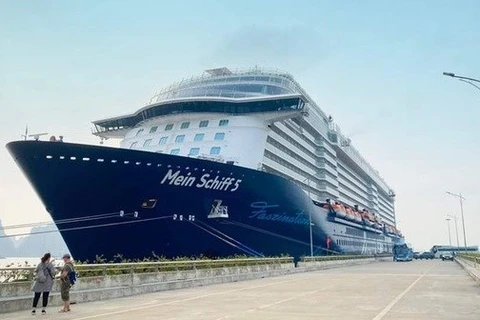Quang Ninh (VNA) – Sea ports have been expected to be a key driver for the economic growth of the northeastern province of Quang Ninh, but for years they have failed to meet the expectation because of shortcomings.
In 2022, ports in the province only received 10,000 TEU from international container shipping lines and about 500 passengers from six international cruise ships.
Last year saw the halt of 80% of the small-sized vessels with a capacity of under 200DWT each that used to operate in Van Gia Port in Mong Cai city.
Deputy Director of Quang Ninh Port Authority Bui Ngoc Nam said that the Cam Pha navigation passage is currently managed by the Vietnam National Coal – Mineral Industries Group. However, in the last five to seven years, just 30% of goods carried on the passage are coal products.
He said that the Cam Pha port area is planned to receive vessels with a capacity of up to 200,000DWT or larger, meaning the depth of the passage must be at least 15 metres but it’s now just about 10 metres.
Nam said that with the typical maritime activities of Quang Ninh seaports, the transshipment of goods at anchorages accounts for about 70% to 80% of the volume of goods passing through the ports. However, the current mooring and transshipment areas are located 20km to 40km from the shore, causing difficulties in saving costs and ensuring safety for people and inland waterway vessels in the port areas.
Deputy Director of Huy Manh Tang Ngoc Ha Co., Ltd. said that seeing the province’s mechanisms and policies on developing seaports and seaport services, businesses have boldly invested in equipment and human resources to meet demand for goods handling.
Businesses also quickly connect and transport goods using inland waterway transportation from the seaports to other northern provinces, building prestige and trust for shippers, ship owners, and foreign partners so that they can help attract big vessels to Quang Ninh seaport area.
To improve the competitiveness of seaports, the province needs to focus on developing passenger and cargo port services, especially liquefied petroleum gas products, and on expanding seaport infrastructure and post-port logistics service area, he said./.























